We put the Apple iPhone 15 Pro Max through our rigorous SBMARK Camera test suite to measure its performance in photo, video, and zoom quality from an end-user perspective. This article breaks down how the device fared in a variety of tests and several common use cases and is intended to highlight the most important results of our testing with an extract of the captured data.
Please note that all images visible in the review have been converted to .jpg format for compatibility matters; the analysis has been done on .HEIC, the original file format of the device. For both photo and video the optimal visualization pipeline for optimal experience with HDR rendering is described in the review.
Overview
Key camera specifications:
- Primary: 48MP sensor, 2.44µm quad pixels, 24mm equivalent f/1.78-aperture lens, Dual Pixel AF, OIS
- Ultra-wide: 12MP sensor, 13mm equivalent f/2.2-aperture lens, Dual Pixel AF
- Tele: 12MP sensor, 1.12µm pixels, 120 mm equivalent f/2.8-aperture lens, Dual Pixel AF
- A17 Pro chipset
Pros
- Vivid brightness and contrast when photos are viewed on HDR display
- Accurate exposure, even in night shots
- Pleasant and natural color rendering and skin tones
- Excellent detail in bright light
- Fast and accurate autofocus
- Effective video stabilization
Cons
- Noise in low-light photos
- Unwanted artifacts, including flare, ghosting, and aliasing
- Slightly limited dynamic range in photos
- Inconsistent detail across all zoom ranges
The Apple iPhone 15 Pro Max is the best iPhone we have tested to date and secures itself a spot among the best devices in our SBMARK Camera ranking. Its performance stood out in terms of exposure, which consistently delivered remarkable image and video results across a range of shooting conditions. Notably excelling in portrait photography and videography, the iPhone 15 Pro Max captured intricate detail and rendered skin tones beautifully.
While its camera specifications may not look as cutting-edge on paper compared to some competitors, Apple’s engineers have managed to make improvements where it counts. The Quad-Bayer image sensor, like in last year’s iPhone 14 Pro and Pro Max, enhances image quality and enables seamless zooming to 2x. A dedicated 5x telephoto lens allows for better image quality and longer tele zoom factors and the iPhone 15 Pro Max surpasses its predecessors as the ultimate video recording smartphone. These improvements collectively establish it as an outstanding choice for mobile photographers and videographers.
Please note that in this article, we draw comparisons between the Apple iPhone 15 Pro Max, iPhone 14 Pro, and 14 Pro Max. The iPhone 14 Pro and Pro Max models had similar camera module specifications and achieved identical results in last year’s tests.
In our tests, the iPhone 15 Pro Max excelled at capturing portraits, showcasing impressive skin-tone accuracy and face exposure across various lighting conditions, especially when viewed on an iPhone display. The camera usually maintained excellent contrast on faces, even in challenging situations, while preserving intricate detail, for example around the eyes. Its capability to capture a shot in the exact moment the shutter button is pressed reduced the risk of missing the decisive moment. In addition, the iPhone 15 Pro Max is still one of the best flagship phones for freezing motion, which is very useful for capturing amazing portraits of friends, children, and pets.
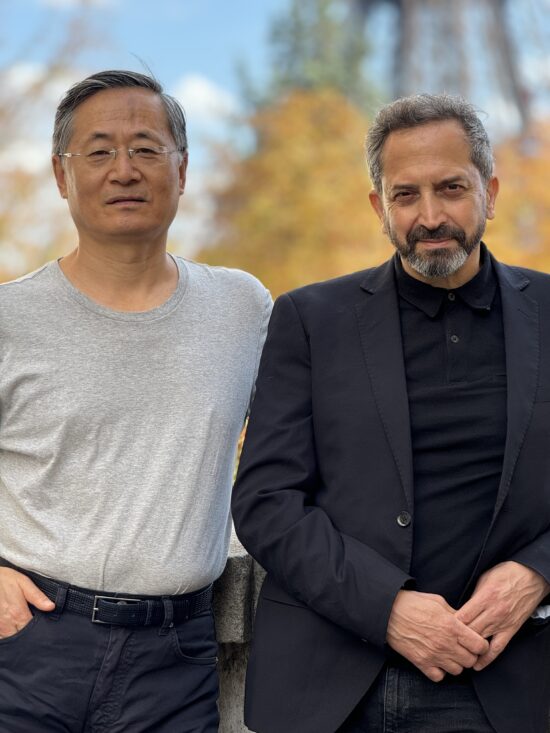
Apple iPhone 15 Pro Max – Natural skin tones and pleasant color rendering
While the iPhone 15 Pro Max offered good exposure and maintained high levels of detail in low light conditions, high noise levels detracted from the overall image quality. When shooting at night, the device will automatically switch from its 24MP image size to 12MP, enabling better control of noise. However, the lower resolution is also responsible for the loss of very fine detail. Still, some specific effort has been made to significantly improve the texture and noise trade-off over its predecessor iPhone 14 Pro.
While the low-light performance in photo mode could have been better in terms of noise and detail, low-light video was better than on most competing phones. When filming in low light, the Apple iPhone 15 Pro Max rendered a very pleasant and accurate exposure, and produced balanced and natural colors, along with good levels of detail. Video stabilization was effective as well.
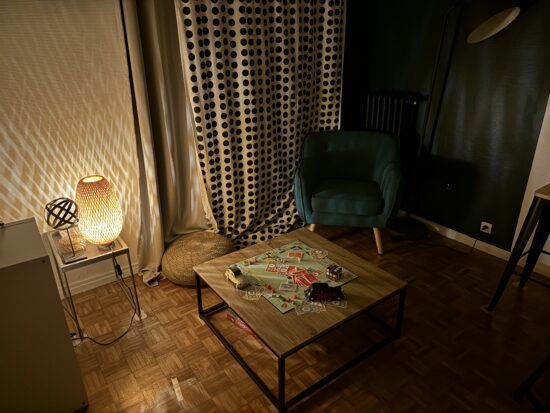
Apple iPhone 15 Pro Max – Extended dynamic range and pleasant color rendering
Test summary
About SBMARK Camera tests: SBMARK’s Camera evaluations take place in laboratories and in real-world situations using a wide variety of subjects. The scores rely on objective tests for which the results are calculated directly by measurement software on our laboratory setups, and on perceptual tests in which a sophisticated set of metrics allow a panel of image experts to compare aspects of image quality that require human judgment. Testing a smartphone involves a team of engineers and technicians for about a week. Photo, Zoom, and Video quality are scored separately and then combined into an Overall score for comparison among the cameras in different devices. For more information about the SBMARK Camera protocol, click here. More details on smartphone camera scores are available here. The following section gathers key elements of SBMARK’s exhaustive tests and analyses. Full performance evaluations are available upon request. Please contact us on how to receive a full report.
Apple iPhone 15 Pro Max Camera Scores vs Ultra-Premium
This graph compares SBMARK photo, zoom and video scores between the tested device and references. Average and maximum scores of the price segment are also indicated. Average and maximum scores for each price segment are computed based on the SBMARK database of devices tested.
Photo
153
Huawei P60 Pro
Huawei P60 Pro
About SBMARK Camera Photo tests
For scoring and analysis, SBMARK engineers capture and evaluate more than 2,600 test images both in controlled lab environments and in outdoor, indoor and low-light natural scenes, using the camera’s default settings. The photo protocol is designed to take into account the main use cases and is based on typical shooting scenarios, such as portraits, family, and landscape photography. The evaluation is performed by visually inspecting images Cons a reference of natural scenes, and by running objective measurements on images of charts captured in the lab under different lighting conditions from 1 to 1,000+ lux and color temperatures from 2,300K to 6,500K.
At this year’s keynote event, Apple put particular emphasis on portrait photography and a new feature called smart HDR, which appears to be a combination of an improved HDR algorithm at the capture level and a new file format that allows for specific image rendering on HDR displays. We evaluated the iPhone’s HEIC files with embedded HDR data using Photo App on macOS Sonoma and an XDR Display.
Other important updates compared to the previous generation iPhones include the jump from 12MP to 24MP images by default in most light conditions. In our tests, this made for significantly improved texture quality, especially in close-up portraits. In addition, the device now offers various personalization options and the possibility to capture 48MP images in HEIC format. The “Pro” mode allows for RAW capture, opening up new possibilities for advanced users who prefer to work with .DNG files. For the purpose of this test, we used the default settings with automatic resolution switch in low-light conditions.
The combination of the 24MP HEIC image files with the embedded HDR data produced amazing results when viewed on a dedicated display. Image results were striking in Photo App on macOS Sonoma on an XDR Display and the photo app on the iPhone 15 Pro Max display alike, with brighter and more vivid rendering than ever. However, users of displays, devices or apps that do not support Apple’s photo HDR format will only see jpeg images without the HDR effect.
Apple iPhone 15 Pro Max Photo scores vs Ultra-Premium
The photo tests analyze image quality attributes such as exposure, color, texture, and noise in various light conditions. Autofocus performances and the presence of artifacts on all images captured in controlled lab conditions and in real-life images are also evaluated. All these attributes have a significant impact on the final quality of the images captured with the tested device and can help to understand the camera’s main strengths and weaknesses.
Close-Up
Close-up is the third new use case score introduced with SBMARK Camera version 5. It evaluates the camera’s ability to capture detail at subject distances below 10cm and magnifications as close possible to 1:1.
Using its ultra-wide camera module, the Apple iPhone 15 Pro Max captured macro images with a very high level of magnification, thanks to a very close focus distance. Just like its predecessor, it also produced very pleasant color rendering, as well as a lot of fine detail at the center of the frame.
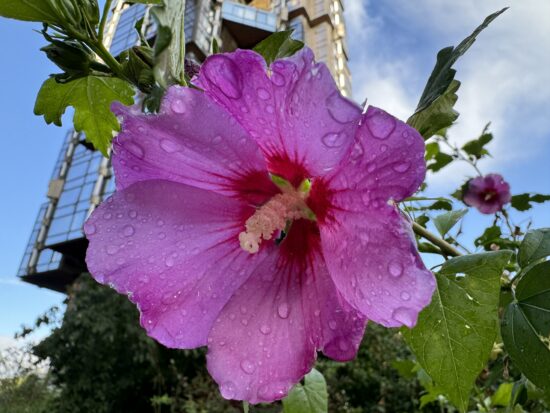
Apple iPhone 15 Pro Max – Nice color rendering and accurate exposure
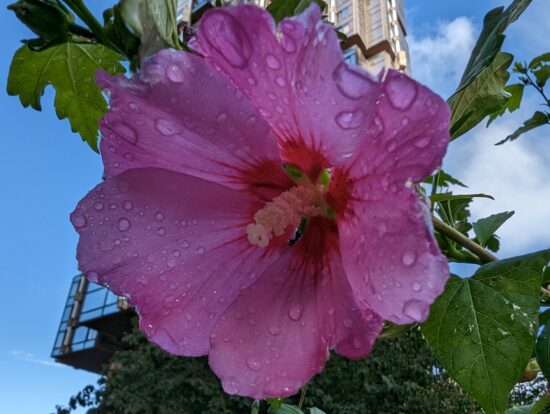
Google Pixel 7 Pro – Underexposure

Huawei P60 Pro – Nice exposure and color rendering
Exposure is one of the key attributes for technically good pictures. The main attribute evaluated is the brightness of the main subject through various use cases such as landscape, portrait, or still life. Other factors evaluated are the contrast and the dynamic range, eg. the ability to render visible details in both bright and dark areas of the image. Repeatability is also important because it demonstrates the camera’s ability to provide the same rendering when shooting several images of the same scene.
Compared to its predecessor, the iPhone 15 Pro Max has significantly improved in terms of dynamic range: Highlight clipping has been noticeably reduced, catching up with the competition. In our tests, subject exposure was accurate and very repeatable in most situations.

Apple iPhone 15 Pro Max – Wide dynamic range, no highlight clipping in the sky

Apple iPhone 14 Pro – Strong highlight clipping and cyan shift in the sky
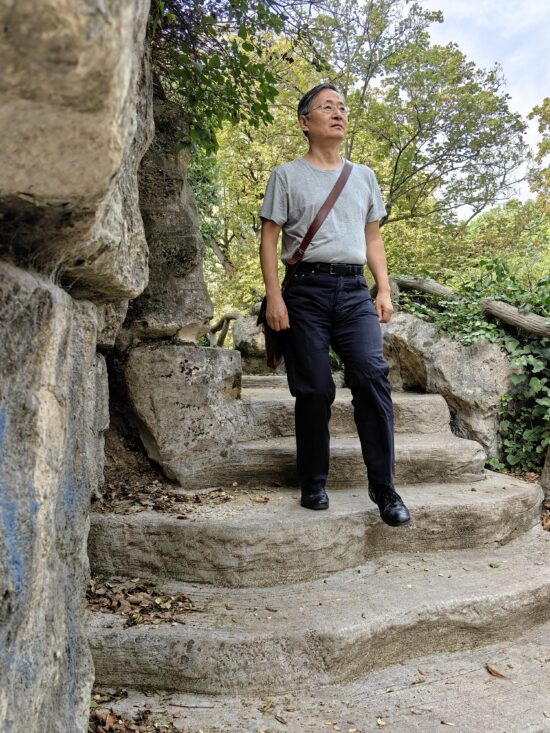
Huawei P60 Pro – Wide dynamic range
The iPhone 15 Pro Max did also very well in terms of contrast, particularly in portrait pictures. This was especially appreciable when viewing the images on an HDR display (on the iPhone screen, or a last generation iPad Pro, or a mac with Sonoma and XDR display for instance). With this kind of display the images appeared brighter than ever and with very nice contrast, not only on the subject but across the entire frame.
In high-contrast scenes, the difference to other devices was even more noticeable, with very bright highlights creating a much more natural effect to the human eye. Skin-tone rendering was especially nice, with very natural shadows and highlights on faces. The device also maintained the signature contrast rendering of previous iPhone generations that prioritizes bright and well-exposed faces, making for outstanding portrait shots.

Apple iPhone 15 Pro Max – Very pleasant contrast on subject and across the frame
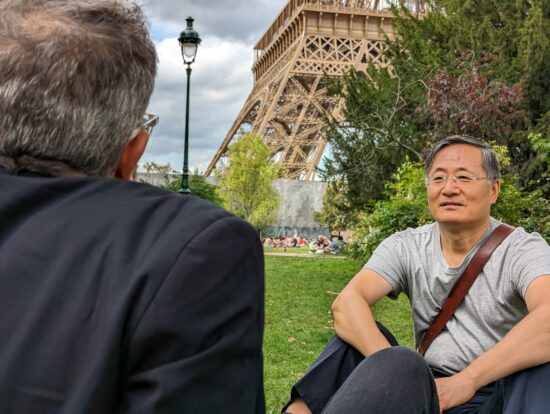
Google Pixel 7 Pro – Slightly low contrast (visible on the arms)
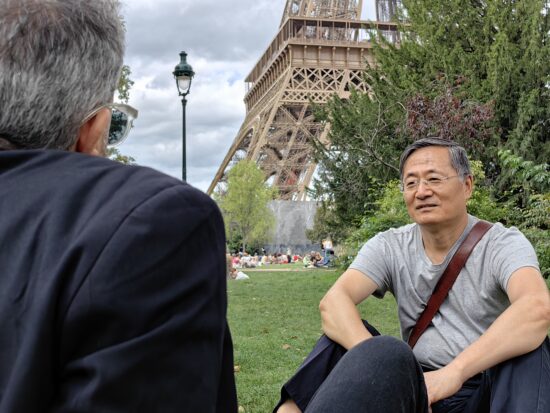
Huawei P60 Pro – Low contrast on background and subject (especially on the arms)
Color is one of the key attributes for technically good pictures. The image quality attributes analyzed are skin-tone rendering, white balance, color shading, and repeatability. For color and skin tone rendering, we penalize unnatural colors but we respect a manufacturer’s choice of color signature.
The smart HDR feature helped produce very natural and pleasant colors, even in very challenging light conditions. Skin tones were improved compared to the already very good Apple iPhone 14 Pro, across all skin tone types.

Apple iPhone 15 Pro Max – Very natural skin tones and neutral white balance

Google Pixel 7 Pro – Slight green cast on faces and background

Huawei P60 Pro – Neutral white balance and fairly natural skin tones
On previous iPhone generations, we had often observed a color shift in high-contrast scenes. On the latest model, this has mostly been eliminated, thanks to the wide dynamic range and accurate color management in the highlight areas of the frame. In our tests, some slight color casts were still sometimes visible when shooting indoors or in low light. This was in line with Apple’s signature style, and otherwise color rendering remained largely neutral.

Apple iPhone 15 Pro Max – Pleasant color rendering, especially for yellow tones
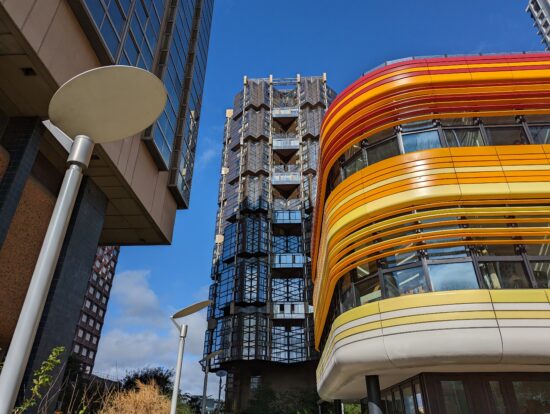
Google Pixel 7 Pro – Slightly undersaturated colors
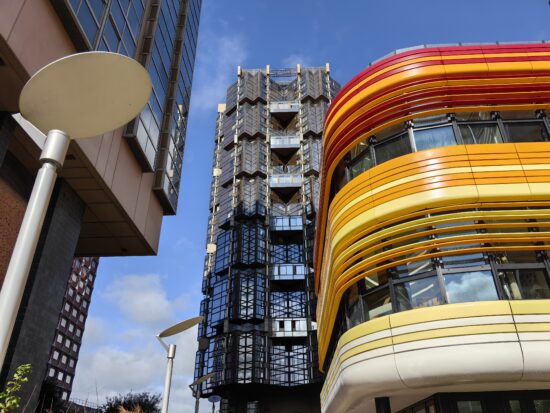
Huawei P60 Pro – Slight color cast
Autofocus
105
Huawei P60 Pro
Huawei P60 Pro
Autofocus tests concentrate on focus accuracy, focus repeatability, shooting time delay, and depth of field. Shooting delay is the difference between the time the user presses the capture button and the time the image is actually taken. It includes focusing speed and the capability of the device to capture images at the right time, what is called ‘zero shutter lag’ capability. Even if a shallow depth of field can be pleasant for a single subject portrait or close-up shot, it can also be a problem in some specific conditions such as group portraits; Both situations are tested. Focus accuracy is also evaluated in all the real-life images taken, from infinity to close-up objects and in low light to outdoor conditions.
The iPhone 15 Pro Max largely maintained the level of autofocus performance that we already had seen on the predecessor, including zero shutter lag in most shooting conditions. This means that the camera is capable of capturing an image at exactly the moment the shutter is pressed, reducing the risk of missing the decisive moment.
Autofocus irregularity and speed: 1000Lux Δ2EV Daylight Handheld
This graph illustrates focus accuracy and speed and also zero shutter lag capability by showing the edge acutance versus the shooting time measured on the AFHDR setup on a series of pictures. All pictures were taken at 1000Lux with Daylight illuminant, 500ms after the defocus. On this scenario, the backlit panels in the scene are set up to simulate a fairly high dynamic range: the luminance ratio between the brightest point and a 18% reflective gray patch is 2, which we denote by a Exposure Value difference of 2. The edge acutance is measured on the four edges of the Dead Leaves chart, and the shooting time is measured on the LED Universal Timer.
Only in very challenging low-light conditions did our testers observe a slight delay to ensure good image all around image quality. In comparison, the iPhone 14 Pro provided a more repeatable shooting time down in low light. However, this might come at the expense of other image quality factors or frame selection.
Autofocus irregularity and speed: 5Lux Δ0EV Tungsten Handheld
This graph illustrates focus accuracy and speed and also zero shutter lag capability by showing the edge acutance versus the shooting time measured on the AFHDR setup on a series of pictures. All pictures were taken at 5Lux with Tungsten illuminant, 500ms after the defocus. The edge acutance is measured on the four edges of the Dead Leaves chart, and the shooting time is measured on the LED Universal Timer.
The camera’s fast aperture creates a shallow depth of field, which made for striking macro shots but could be a drawback in other shooting situations. Without a variable aperture and no specific software solution to compensate for the shallow depth of field, texture and detail are lost in faces located in the background of a group portrait scene. In contrast, other top-end phones, such as the Huawei P60 Pro, are capable of maintaining more image information on background subjects.
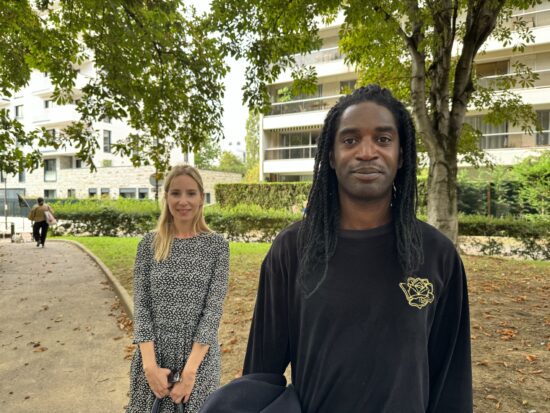

Apple iPhone 15 Pro Max – Loss of details on the face in the back


Huawei P60 Pro – Sharp face in the background
Texture tests analyze the level of details and the texture of subjects in the images taken in the lab as well as in real-life scenarios. For natural shots, particular attention is paid to the level of details in the bright and dark areas of the image. Objective measurements are performed on chart images taken in various lighting conditions from 1 to 1000 lux and different kinds of dynamic range conditions. The charts used are the proprietary SBMARK chart (DMC) and the Dead Leaves chart.
The camera in Apple’s new flagship device comes with an entirely new texture rendering management, and in our tests the results were outstanding. With most lighting conditions resulting in 24MP images, finest details were preserved much better than on most competitors.
SBMARK CHART (DMC) detail preservation score vs lux levels for tripod and handheld conditions
This graph shows the evolution of the DMC detail preservation score with the level of lux, for two holding conditions. DMC detail preservation score is derived from an AI-based metric trained to evaluate texture and details rendering on a selection of crops of our SBMARK chart.
The difference was even more noticeable on fine skin texture in close-up portraits. The Apple iPhone 15 Pro Max provided very natural skin rendering with subtle local contrast and pleasant rendering of the finest details like hair, lips, wrinkles, etc.

Apple iPhone15 Pro Max – Outdoor detail

Apple iPhone15 Pro Max – Very good fine detail

Google Pixel 7 Pro – Outdoor detail

Google Pixel 7 Pro – Lack of fine detail

Huawei P60 Pro – Outdoor detail

Huawei P60 Pro – Lack of fine detail
At longer shooting distances and in dimmer lighting conditions, some loss of detail could be observed, but overall textures remained well preserved. In very low light, the camera uses pixel binning to maintain good overall image quality with accurate exposure and low levels of noise. However, a drop in texture preservation was noticeable on the resulting lower resolution (12MP) images.
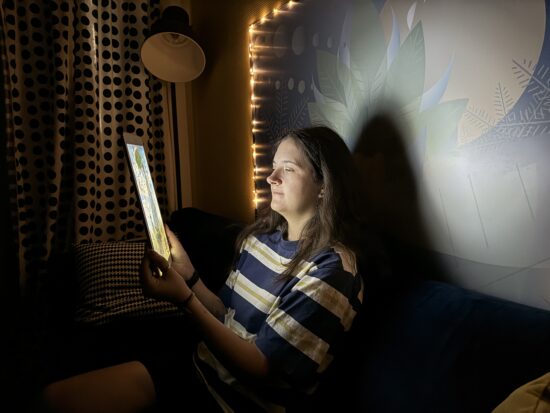
Apple iPhone 15 Pro Max – Low light texture

Apple iPhone 15 Pro Max – Lack of fine detail
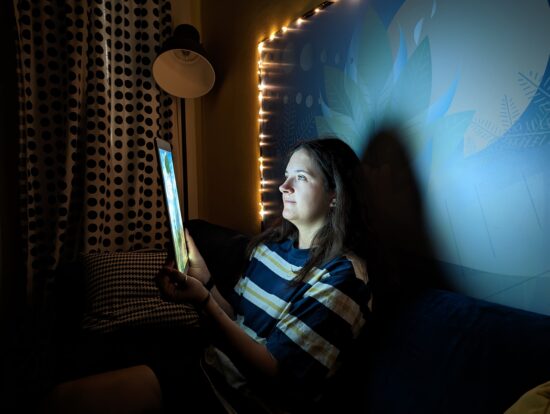
Google Pixel 7 Pro – Low light texture

Google Pixel 7 Pro – Lack of detail
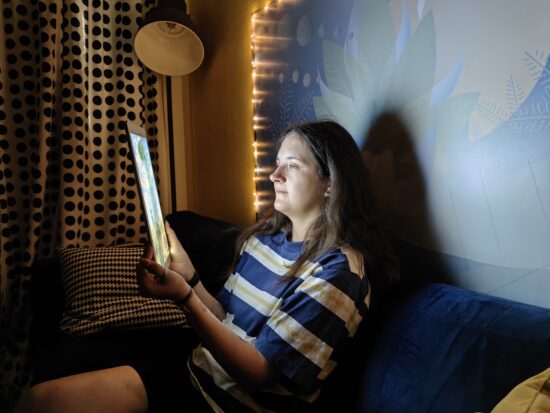
Huawei P60 Pro – Low light texture

Huawei P60 Pro – Slight loss of fine detail
Noise
93
Honor Magic5 Pro
Honor Magic5 Pro
Noise tests analyze various attributes of noise such as intensity, chromaticity, grain, structure on real-life images as well as images of charts taken in the lab. For natural images, particular attention is paid to the noise on faces, landscapes, but also on dark areas and high dynamic range conditions. Noise on moving objects is also evaluated on natural images. Objective measurements are performed on images of charts taken in various conditions from 1 to 1000 lux and different kinds of dynamic range conditions. The chart used is the Dead Leaves chart and the standardized measurement such as Visual Noise derived from ISO 15739.
Visual noise evolution with illuminance levels in handheld condition
This graph shows the evolution of visual noise metric with the level of lux in handheld condition. The visual noise metric is the mean of visual noise measurement on all patches of the Dead Leaves chart in the AFHDR setup. SBMARK visual noise measurement is derived from ISO15739 standard.
Like its predecessor, the iPhone 15 Pro Max comes with higher noise levels than some competitors, for example the Huawei P60 Pro. This said, images captured in bright light were typically free of noise, or only showed some pleasant fine grain in some image areas. In dimmer lighting conditions, fine luminance noise became more visible, especially in areas of plain color. When shooting night scenes, the device automatically switched to the lower image resolution in order to limit the amount of image noise. It is possible to deactivate this automatic switch in the photo app.

Apple iPhone 15 Pro Max – Low light noise

Apple iPhone 15 Pro Max – Fine luminance noise

Google Pixel 7 Pro – Low light noise

Google Pixel 7 Pro – Low frequency chroma noise

Huawei P60 Pro – Low light noise

Huawei P60 Pro – Slight low frequency chroma noise
Artifacts
75
Xiaomi Redmi 12 5G
Xiaomi Redmi 12 5G
The artifacts evaluation looks at lens shading, chromatic aberrations, geometrical distortion, edges ringing, halos, ghosting, quantization, unexpected color hue shifts, among others type of possible unnatural effects on photos. The more severe and the more frequent the artifact, the higher the point deduction on the score. The main artifacts observed and corresponding point loss are listed below.
Main photo artifacts penalties
Most common image artifacts were very well under control on the iPhone 15 Pro Max, but our testers observed some remaining ghosting, ringing, and color quantization effects in challenging shooting conditions.

Apple iPhone 15 Pro Max – Artifacts

Apple iPhone 15 Pro Max – Visible ghosting on the hand
Bokeh is tested in one dedicated mode, usually portrait or aperture mode, and analyzed by visually inspecting all the images captured in the lab and in natural conditions. The goal is to reproduce portrait photography comparable to one taken with a DLSR and a wide aperture. The main image quality attributes paid attention to are depth estimation, artifacts, blur gradient, and the shape of the bokeh blur spotlights. Portrait image quality attributes (exposure, color, texture) are also taken into account.
The ability to automatically switch into portrait mode when faces are detected in the scenes is one of the key new features introduced with the iPhone 15 series. Users can also remove the portrait rendering in the photo app, if they later change their mind. The portrait effect applied by the iPhone 15 Pro Max is an improved version of what we had seen on the iPhone 14 Pro. In our tests, the depth map was more precise, resulting in better subject isolation, especially around fine details, such as hair. The blur intensity remained pleasant and spotlights in the background were rendered with nice contrast, which was especially noticeable in night portraits.

Apple iPhone 15 Pro Max – Pleasant blur and good spotlight shape

Google Pixel 7 Pro – Pleasant blur and well contrasted spotlights

Huawei P60 Pro – Pleasant blur and well contrasted and rounded spotlights
Though the SBMARK protocol only tests the default zoom ratio available on Portrait mode, the iPhone 15 Pro Max is able to provide a very nice bokeh effect at 1x, 2x and 5x, switching to its tele camera module for the longest range.
Preview
86
Apple iPhone 14 Pro Max
Apple iPhone 14 Pro Max
Preview tests analyze the image quality of the camera app’s preview of the image, with particular attention paid to the difference between the capture and the preview, especially regarding dynamic range and the application of the bokeh effect. Also evaluated is the smoothness of the exposure, color and focus adaptation when zooming from the minimal to the maximal zoom factor available. The preview frame rate is measured using the LED Universal Timer.
Apple’s new flagship was among the leading devices in our preview test. Pinch control when zooming was especially smooth, and the preview image was representative of the final capture. In portrait mode, the simulated bokeh was rendered well in preview, with cohesive subject isolation and few differences to the final capture. Exposure and local attributes such as noise were usually in line with the final image as well. However, the preview struggled to keep up with the increased dynamic range in the iPhone 15 Pro Max images, showing higher levels of highlight clipping. Despite slightly more differences between preview and capture than on the iPhone 14 Pro, the new model provided significantly better preview quality than other top-end competitors, such as the Huawei P60 Pro and Google Pixel 7 Pro and remains one of the most reliable devices on the market in this respect.
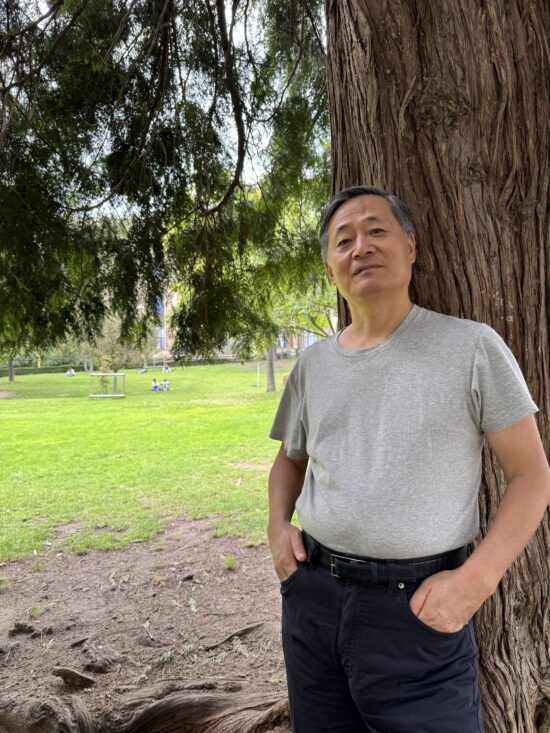
Apple iPhone 15 Pro Max – Capture – Accurate target exposure and neutral white balance
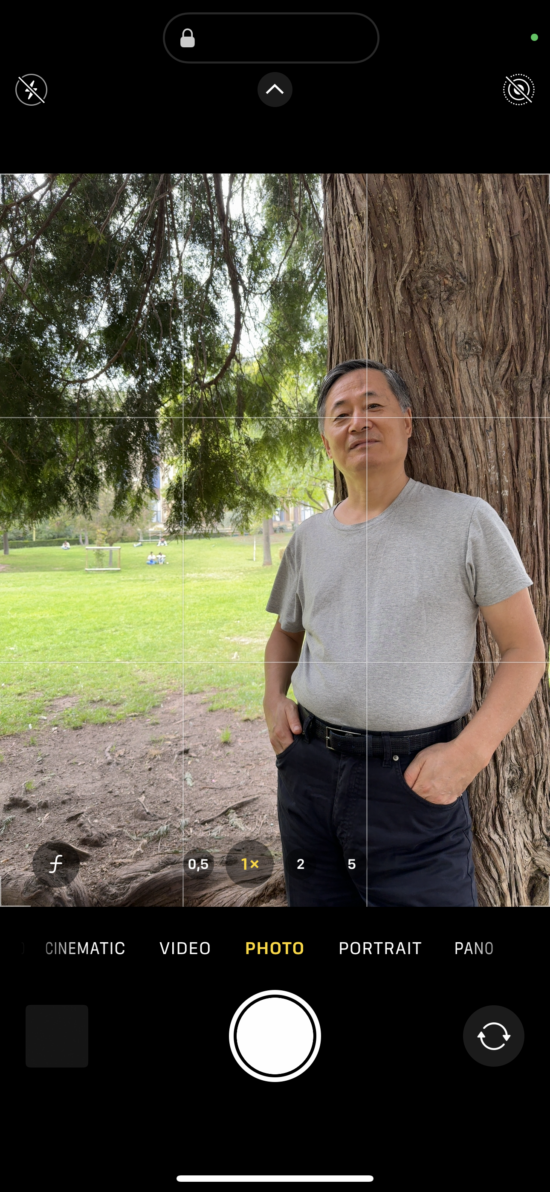
Apple iPhone 15 Pro Max – Preview – Similar rendering to capture, slightly more highlight clipping
Zoom
142
Huawei P60 Pro
Huawei P60 Pro
About SBMARK Camera Zoom tests
SBMARK engineers capture and evaluate over 400 test images in controlled lab environments and in outdoor, indoor, and low-light natural scenes, using the camera’s default settings and pinch zoom at various zoom factors from ultra wide to very long-range zoom. The evaluation is performed by visually inspecting the images Cons a reference of natural scenes, and by running objective measurements of chart mages captured in the lab under different conditions from 20 to 1000 lux and color temperatures from 2300K to 6500K.
The iPhone 15 Pro Max comes with a periscope design in its tele camera, a first for iPhones. The tele camera offers good zoom capabilities up to 5x, or 120mm equivalent, thanks to the unique tetraprism optical design. The lens also boasts an f/2.8 aperture, the brightest among 120mm phone cameras, as well as optical stabilization.
Apple iPhone 15 Pro Max Zoom Scores vs Ultra-Premium
This graph illustrates the relative scores for the different zoom ranges evaluated. The abscissa is expressed in 35mm equivalent focal length. Zooming-in scores are displayed on the right and Zooming-out scores on the left.
Video Zoom
In our video zoom tests the iPhone 15 Pro Max performed fairly well across a wide range of zoom factors, maintaining fairly high levels of detail from ultra-wide (15mm equivalent) to long range with its tele module (150mm). Noise was well under control as well, even in low-light conditions, and exposure was pleasant and accurate. Performance remained cohesive when zooming in, ensuring an overall pleasant experience for videographers and opening up lots of creative possibilities when filming with the new iPhone.
Apple iPhone 15 Pro Max – 150mm – Well controlled noise and fairly high levels of detail
Apple iPhone 14 Pro – 150mm – Noise and lack of detail
Huawei P60 Pro – 150mm – Fairly good detail and low noise
Wide
104
Huawei P60 Pro
Huawei P60 Pro
These tests analyze the performance of the ultra-wide camera at several focal lengths from 12 mm to 20 mm. All image quality attributes are evaluated, with particular attention paid to such artifacts as chromatic aberrations, lens softness, and distortion. Pictures below are an extract of tested scenes.
Like the iPhone 14 Pro, the new iPhone offers an ultra-wide camera with a 13mm equivalent focal length. When using this camera module, the device was capable of preserving a fairly high amount of detail at minimum focal lengths (13mm, 0.5x), with well-controlled noise and nice exposure. However, it was not quite on the same level as the best in class in terms of ultra-wide detail, despite improvements over the 14 Pro. When zooming in on the ultra-wide the camera applies simple digital zoom without any fusion algorithms. This resulted in a noticeable drop in image detail which means the ultra-wide is best used at its native focal length.

Apple iPhone 15 Pro Max – High levels of detail and low noise but cyan shift in the sky

Google Pixel 7 Pro – High levels of detail but noise

Huawei P60 Pro – High levels of detail, no noise
Tele
104
Huawei P60 Pro
Huawei P60 Pro
All image quality attributes are evaluated at focal lengths from approximately 40 mm to 300 mm, with particular attention paid to texture and detail. The score is derived from a number of objective measurements in the lab and perceptual analysis of real-life images.
The addition of a periscope module represents a significant evolution for the iPhone series. It allows for the capture of long range (5x) tele shots with high levels of detail and very pleasant overall rendering. However, the lack of a hardware or software solution for intermediate tele zoom levels means that image quality was inconsistent across the tele zoom range.
Our measurements showed that the Apple iPhone 15 Pro Max captured higher levels of detail than the iPhone 14 Pro for most zoom settings, especially at wide (13mm to 21mm) and long ranges (from 120mm to 200+mm), thanks to the dedicated 5x tele lens. However, between 35mm and 90mm, the level of detail dropped as zoom is achieved by cropping the primary camera image. At intermediate tele zoom settings the iPhone 14 Pro performed slightly better as it switches to its tele camera module already at around 75mm (3x).
Between 90mm and 120mm, the iPhone 15 Pro Max is not switching to the tele module yet but is instead applying detail-enhancement processing in order to try and render slightly sharper images. However, in our tests this resulted in strong oversharpening, unnatural detail rendering, noise and artifacts. At 120mm, the device eventually switches to it tele module. In our tests this improved the level of detail and overall image quality significantly.
SBMARK CHART (DMC) detail preservation score per focal length
This graph shows the evolution of the DMC detail preservation score with respect to the full-frame equivalent focal length for different light conditions. The x-axis represents the equivalent focal length measured for each corresponding shooting distance and the y-axis represents the maximum details preservation metric score: higher value means better quality. Large dots correspond to zoom ratio available in the user interface of the camera application.
SBMARK CHART (DMC) detail preservation score per focal length
This graph shows the evolution of the DMC detail preservation score with respect to the full-frame equivalent focal length for different light conditions. The x-axis represents the equivalent focal length measured for each corresponding shooting distance and the y-axis represents the maximum details preservation metric score: higher value means better quality. Large dots correspond to zoom ratio available in the user interface of the camera application.
SBMARK CHART (DMC) detail preservation score per focal length
This graph shows the evolution of the DMC detail preservation score with respect to the full-frame equivalent focal length for different light conditions. The x-axis represents the equivalent focal length measured for each corresponding shooting distance and the y-axis represents the maximum details preservation metric score: higher value means better quality. Large dots correspond to zoom ratio available in the user interface of the camera application.
SBMARK CHART (DMC) detail preservation score per focal length
This graph shows the evolution of the DMC detail preservation score with respect to the full-frame equivalent focal length for different light conditions. The x-axis represents the equivalent focal length measured for each corresponding shooting distance and the y-axis represents the maximum details preservation metric score: higher value means better quality. Large dots correspond to zoom ratio available in the user interface of the camera application.
At close range (~50mm, 2x), the device managed to maintain high levels of detail when compared to the competition. Color and exposure were pleasant in most conditions.

Apple iPhone 15 Pro Max – Close range tele (50mm)

Apple iPhone 15 Pro Max – Good detail

Google Pixel 7 Pro – Close range (50mm)

Google Pixel 7 Pro – Strong loss of detail

Huawei P60 Pro – Close range (50mm)

Huawei P60 Pro – Slight loss of detail
At medium range, (~80mm, 3x), the level of detail dropped significantly compared to close or long range tele settings. Some competitors, like the Huawei 60 Pro, fuse image information from the primary and tele camera modules to maximize image detail at intermediate tele settings. The Apple does not apply any such methods.
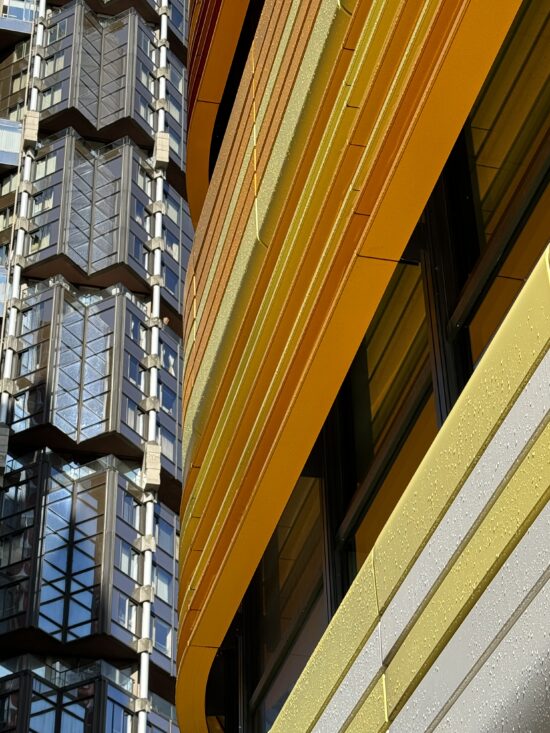
Apple iPhone 15 Pro Max – Medium range tele (80mm)

Apple iPhone 15 Pro Max – Strong loss of detail
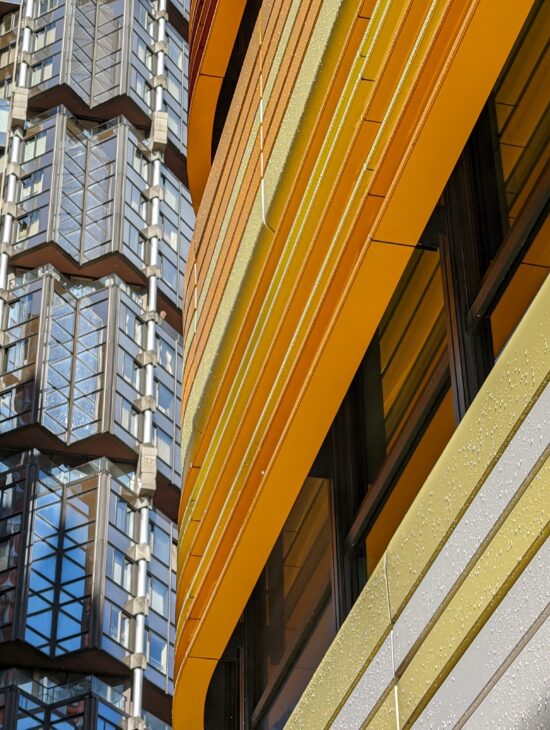
Google Pixel 7 Pro – Medium range tele (80mm)

Google Pixel 7 Pro – High level of detail
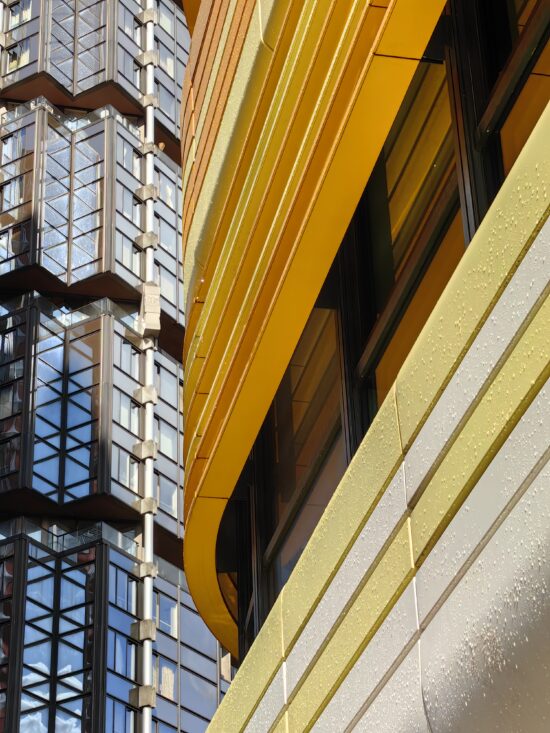
Huawei P60 Pro – Medium range tele (80mm)

Huawei P60 Pro – High level of detail
With its 5x tele module, the Apple iPhone 15 Pro Max produced long range tele image quality that was previously unseen on Apple devices. At 6x, the level of detail was very high, challenging devices like the Google Pixel 7 Pro and Huawei P60 Pro.

Apple iPhone 15 Pro Max – Long range tele (120mm)

Apple iPhone 15 Pro Max – High level of detail

Google Pixel 7 Pro – Long range tele (120mm)

Google Pixel 7 Pro – Good fine detail

Huawei P60 Pro – Long range tele (120mm)

Huawei P60 Pro – High level of detail, slightly unnatural effect
Low-light tele shots were significantly improved over the iPhone 14 Pro, and some results even bested top performers like the Huawei P60 Pro.

Apple iPhone 15 Pro Max – Low light tele (120mm)

Apple iPhone 15 Pro Max – Slight loss of detail, fairly well controlled noise

Apple iPhone 14 Pro – Low light tele (120mm)

Apple iPhone 14 Pro – Strong loss of detail, noise

Huawei P60 Pro – Low light tele (120mm)

Huawei P60 Pro – Slightly stronger loss of detail than iPhone 15 Pro Max
About SBMARK Camera Video tests
SBMARK engineers capture and evaluate more than 2.5 hours of video in controlled lab environments and in natural low-light, indoor and outdoor scenes, using the camera’s default settings. The evaluation consists of visually inspecting natural videos taken in various conditions and running objective measurements on videos of charts recorded in the lab under different conditions from 1 to 1000+ lux and color temperatures from 2,300K to 6,500K.
We tested the Apple iPhone 15 Pro Max video mode with 4K resolution, 60fps variable frame rate and Dolby vision activated for embedded HDR data. This configuration produced excellent results, securing the Apple flagship the top spot in the SBMARK video ranking and surpassing the previous generation Apple flagship. Video exposure and color rendering were very consistent in most conditions and the texture/noise trade-off was the best we have seen to date. The autofocus system also performed well down to low light and video stabilization was among the best in the market.
Just like for the iPhone 14 Pro and other HDR video enabled devices that we have tested previously, a compatible HDR display is required to see the full potential of the HDR rendering. Please note that YouTube only displays the original HDR rendering if videos are watched on a compatible HDR screen. Otherwise, a compressed SDR video is displayed.
The iPhone 15 Pro Max features a new ProRes Log mode, which is available at 4K and 60fps. There is now also the possibility to save footage on an external SSD. Add ACES color management compatibility to the mix and the iPhone 15 Pro Max becomes a serious option for professional videographers. Additional modes that were not tested under the SBMARK video protocol but could be important options for serious video shooters are:
- Video cinematic mode up to 4K HDR with 30fps
- Action mode up to 2.8K with 60 fps and emphasized stabilization capacities
Apple iPhone 15 Pro Max Video scores vs Ultra-Premium
Video tests analyze the same image quality attributes as for still images, such as exposure, color, texture, or noise, in addition to temporal aspects such as speed, and smoothness and stability of exposure, white balance, and autofocus transitions.
Exposure tests evaluate the brightness of the main subject and the dynamic range, eg. the ability to render visible details in both bright and dark areas of the image. Stability and temporal adaption of the exposure are also analyzed.
The iPhone 15 Pro Max achieved the best score for video exposure to date, thanks to the very well-managed HDR format with a wide dynamic range, a very stable exposure and very smooth exposure transitions.
Apple iPhone 15 Pro Max – Accurate and stable exposure, wide dynamic range
Apple iPhone 14 Pro – Accurate exposure, wide dynamic range
Huawei P60 Pro – Wide dynamic range but exposure stepping
Image-quality color analysis looks at color rendering, skin-tone rendering, white balance, color shading, stability of the white balance and its adaption when light is changing.
Color management is another area where the iPhone 15 Pro Max offered a significantly better performance than most competitors. While white balance remained slightly warm in indoor and low-light conditions, the device was able to render most skin tones accurately, and color rendering was overall very pleasant.
Apple iPhone 15 Pro Max – Pleasant color rendering and skin tones
Apple iPhone 14 Pro – Pleasant color rendering but slight color cast
Huawei P60 Pro – Slightly unnatural skin tones and color rendering
Thanks to improved tracking capabilities and a fast autofocus, the iPhone 15 Pro Max managed to improve on its predecessor in this category, too. The iPhone 15 Pro Max offered one of the most reliable video autofocus systems, with accurate tracking, even in low light, and very well-managed focus transitions for a pleasant cinematic effect.
Apple iPhone 15 Pro Max – Effective subject tracking and smooth focus transitions
Apple iPhone 14 Pro – Effective subject tracking and focus transitions
Huawei P60 Pro – Effective subject tracking but very slight focus stepping during transition
Texture
111
Oppo Find X6 Pro
Oppo Find X6 Pro
Texture tests analyze the level of details and texture of the real-life videos as well as the videos of charts recorded in the lab. Natural videos recordings are visually evaluated, with particular attention paid to the level of details in the bright and areas as well as in the dark. Objective measurements are performed of images of charts taken in various conditions from 1 to 1000 lux. The charts used are the SBMARK chart (DMC) and Dead Leaves chart.
SBMARK CHART (DMC) detail preservation video score vs lux levels
This graph shows the evolution of the DMC detail preservation video score with the level of lux in video. DMC detail preservation score is derived from an AI-based metric trained to evaluate texture and details rendering on a selection of crops of our SBMARK chart.
In our video tests, the iPhone 15 Pro Max produced noticeably higher levels of detail than most competitors and was able to recover some fine detail on portraits and landscapes, especially when recording in bright light. Due to the iPhone 15 Pro Max being tested at a higher frame rate (60fps), texture results were slightly lower than on the iPhone 14 Pro. This was mainly noticeable in dimmer light conditions.
Noise tests analyze various attributes of noise such as intensity, chromaticity, grain, structure, temporal aspects on real-life video recording as well as videos of charts taken in the lab. Natural videos are visually evaluated, with particular attention paid to the noise in the dark areas and high dynamic range conditions. Objective measurements are performed on the videos of charts recorded in various conditions from 1 to 1000 lux. The chart used is the SBMARK visual noise chart.
Spatial visual noise evolution with the illuminance level
This graph shows the evolution of spatial visual noise with the level of lux. Spatial visual noise is measured on the visual noise chart in the video noise setup. SBMARK visual noise measurement is derived from ISO15739 standard.
Temporal visual noise evolution with the illuminance level
This graph shows the evolution of temporal visual noise with the level of lux. Temporal visual noise is measured on the visual noise chart in the video noise setup.
Video noise results were close to last year’s iPhone 14 Pro, with slight improvements noticeable in dimmer light conditions. Its well-controlled noise with an HDR video format is one of the strongest plus points of the iPhone 15 Pro Max video mode.
Stabilization evaluation tests the ability of the device to stabilize footage thanks to software or hardware technologies such as OIS, EIS, or any others means. The evaluation looks at residual motion, smoothness, jello artifacts and residual motion blur on walk and run use cases in various lighting conditions. The video below is an extract from one of the tested scenes.
In terms of video stabilization, the iPhone 15 Pro Max managed to keep up with most flagship devices that feature a stabilized main camera module. Motion such as handshake was usually well compensated for, and sharpness between frames was even more consistent than on the iPhone 14 Pro.
Apple iPhone 15 Pro Max – Well stabilized running sequence, very little camera shake
Apple iPhone 14 Pro – Well stabilized running sequence
Huawei P60 Pro – Well stabilized running sequence, very little camera shake
Artifacts
85
Xiaomi 12S Ultra
Xiaomi 12S Ultra
Artifacts are evaluated with MTF and ringing measurements on the SFR chart in the lab as well as frame-rate measurements using the LED Universal Timer. Natural videos are visually evaluated by paying particular attention to artifacts such as aliasing, quantization, blocking, and hue shift, among others. The more severe and the more frequent the artifact, the higher the point deduction from the score. The main artifacts and corresponding point loss are listed below.
Main video artifacts penalties
Thanks to the good video quality at a high 60fps frame rate, the iPhone 15 Pro Max managed to reduce the impact of unwanted artifacts, especially the judder effects, which particularly impacts panning shots. Some common artifacts like aliasing, flare, and ringing were still visible on occasion, but their impact on overall quality was usually minor. Only flare could pose a slight challenge to videographers, but the iPhone did not differ much from other flagship phones in this respect.

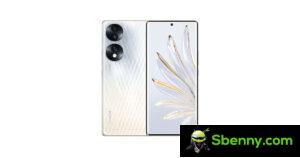

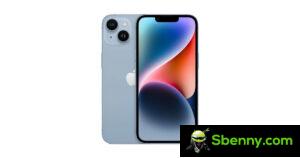
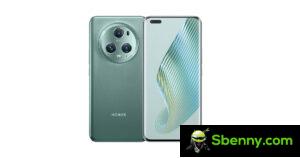

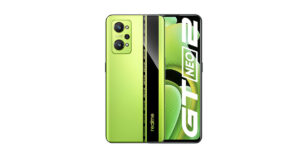
Start a new Thread